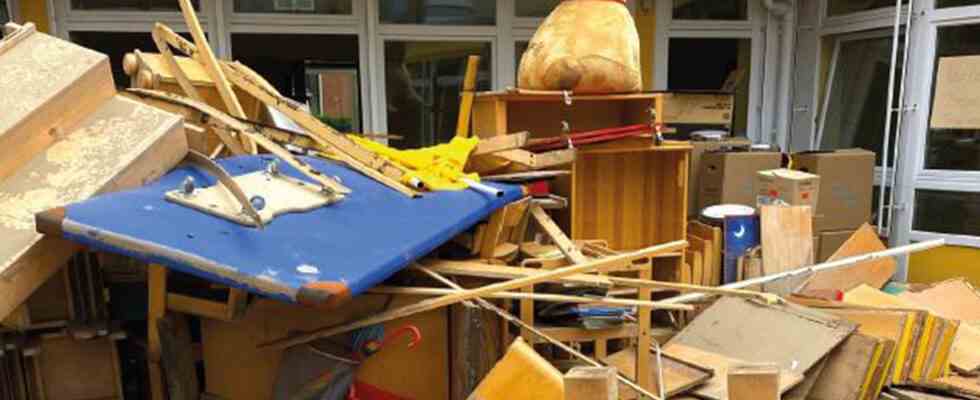Status: 07/14/2022 1:55 p.m
The flood disaster of summer 2021 triggered a great willingness to donate in Germany. To date, about 50 percent of the funds have been called. What did they do?
The water is 1.20 meters high on July 14, 2021 in the children’s castle in Eschweiler. The flood destroyed the entire facility. Furniture, toys, files, kitchen appliances, everything is gone. The building, which belongs to the evangelical church, is also badly damaged.
The day-care center is organized as an association without a major sponsor behind it. They don’t have elementary insurance. “My first thought was: How are we supposed to rebuild this? That can’t work,” recalls Nadine Jelic, head of the daycare center.
Daycare reopening thanks to donations
It works. In February 2022 they can start day care center operations again for the 89 children. “What saved us are the donations,” says Jelic. The children’s castle receives donations from private individuals, from foundations and also from the pot of “Aktion Deutschland Hilft”. Here alone it is 30,000 euros. Money that Nadine Jelic could use to buy TÜV-tested furniture, toys and air filter systems.
“Just last week, another cupboard came for one of our four groups. There were also delays because of the global supply bottlenecks.” Jelic is convinced that if they had waited for funds from the federal reconstruction fund, it would still not have been possible to operate the daycare center to this day.
The day care center was able to reopen in February – also thanks to donations.
Image: Kindergarten Kinderburg
“Aktion Deutschland Hilft” collects 282 million euros
In the weeks and months after the flood, the willingness to donate was great in Germany. 282.2 million euros came from appeals for donations by “Aktion Deutschland Hilft”, the alliance of German aid organizations. The merger includes organizations such as the workers’ welfare, the workers’ Samaritan federation, the Malteser or the Johanniter. According to the association, around 50 percent of the donations have so far been used to support those affected – as emergency aid for private individuals, for heated living containers, for psychosocial projects and as support for affected associations, nursing homes or youth hostels.
A maximum of ten percent of the total donation goes towards operating costs, according to “Aktion Deutschland Hilft”. In the first phase after the flood, it was all about emergency aid. The funds that are still available are to be used primarily for reconstruction and other psychological and social aid. “Many of those affected will not be able to cover all financial damage through payments from insurance companies or the state. This is where the donations come into play,” says spokeswoman Birte Steigert.
For example, those who did not have elementary insurance can apply for reconstruction aid from the federal government, up to 80 percent of the required amount. Those affected can apply for the remaining 20 percent, for example, through alliance organizations from “Aktion Deutschland Hilft”, explains Steigert.
“Some are ashamed”
There is help with applications in the so-called flood offices, which still exist today in many affected communities. In a Malteser office, Elke Friedrich supports people in Rheinbach, North Rhine-Westphalia. In the meantime, she has helped around 600 people affected with donation applications.
But by no means all those who are entitled would have applied for donations. “Unfortunately, there are people who are ashamed. They know that it exists, but then unfortunately they think it would be dishonorable to have to do everything on their own. I think that’s a shame because the people who donated are happy to do so and did it with pleasure,” says Friedrich.
Subsequent applications possible
Nadine Jelic is now working on a follow-up application for donations for the children’s castle in Eschweiler. After they have found new premises and equipped them, it is now the turn of the outdoor area. Only last week someone from the Malteser was there to see what was needed. “We don’t have any real room to move anymore, the outdoor area has only just been completed, things that are missing are noticed every day. But at the moment we can work like this,” says Jelic.
The great support, also from private individuals, helped her through the difficult time, says Jelic, who also lost her private home due to the flooding. “Looking back, the year was very exhausting, very emotional. But it was a very nice feeling to experience that there are so many people who want to support us.”

